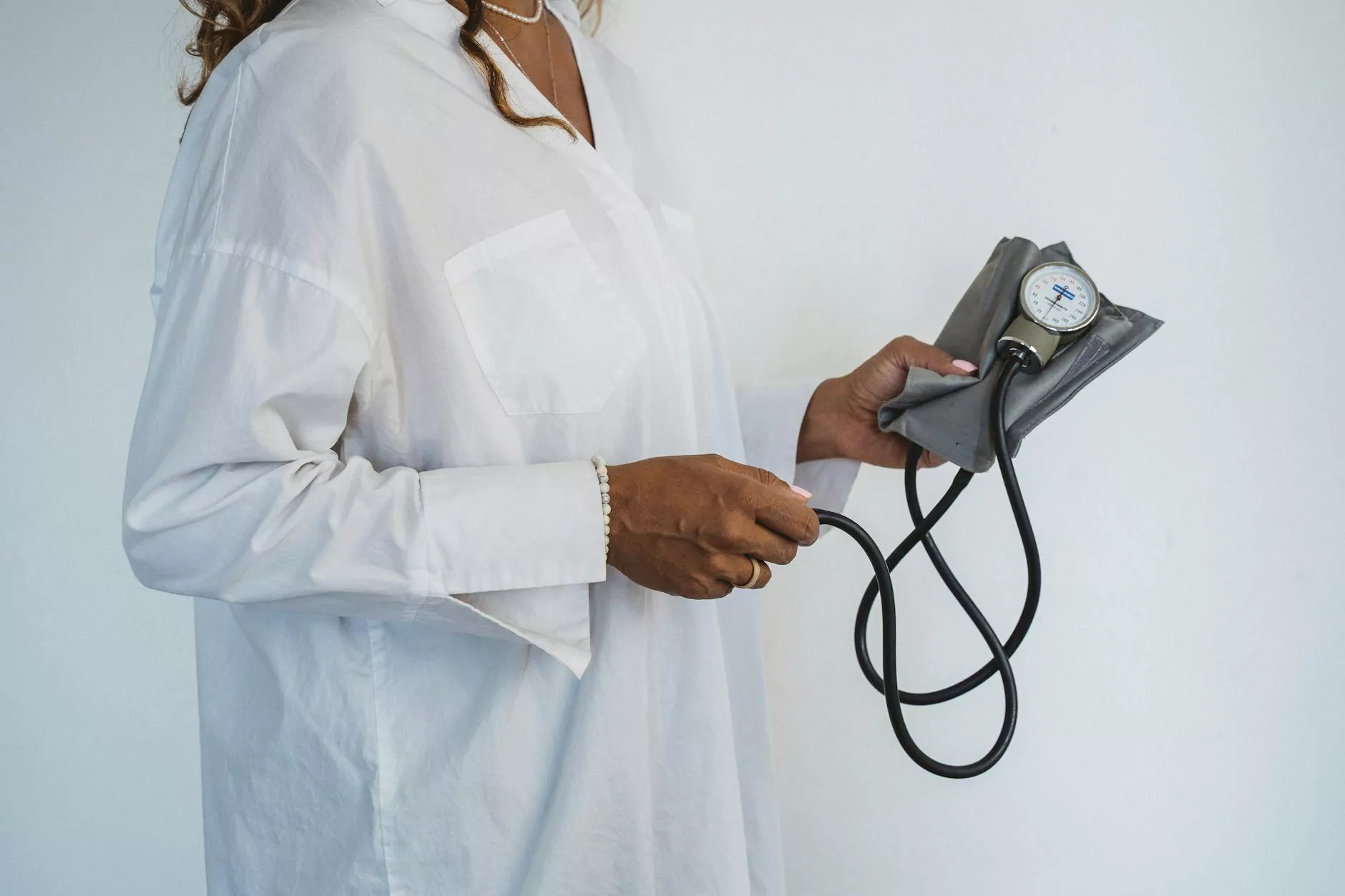Understanding Posterior Shoulder Pain with External Rotation

Posterior shoulder pain with external rotation is a common ailment that can significantly affect one's ability to perform daily activities effectively. It is essential to understand the underlying causes, the symptoms, and the possible treatment approaches to alleviate this discomfort and restore functionality.
What is Posterior Shoulder Pain?
Posterior shoulder pain refers to discomfort located in the back portion of the shoulder. This type of pain can arise from various issues, including muscular strain, rotator cuff injuries, or joint-related problems. When this pain occurs specifically during external rotation, it can indicate particular conditions that require attention.
The Anatomy of the Shoulder
To fully grasp posterior shoulder pain with external rotation, it's crucial to understand the anatomy of the shoulder. The shoulder is made up of three main bones: the humerus, scapula, and clavicle. Several key anatomical structures contribute to the shoulder's complex function:
- Rotator Cuff: A group of muscles and tendons that stabilize the shoulder and allow for a wide range of motion.
- Labrum: A fibrocartilaginous structure that deepens the shoulder socket and adds stability.
- Ligaments: Connective tissues that attach bone to bone and help maintain shoulder stability.
- Nerves and Blood Vessels: These carry signals and nutrients crucial for shoulder function.
Common Causes of Posterior Shoulder Pain with External Rotation
Several factors can contribute to posterior shoulder pain specifically associated with external rotation. Some of the most common causes include:
1. Rotator Cuff Injuries
The rotator cuff is susceptible to injuries due to overuse, acute trauma, or degenation. Individuals who perform repetitive overhead movements are particularly at risk. Symptoms may include:
- Persistent pain in the back of the shoulder.
- Difficulty lifting the arm during external rotation.
- Weakness in shoulder strength.
2. Shoulder Impingement Syndrome
This condition occurs when the tendons of the rotator cuff become irritated and inflamed, particularly during arm elevation and external rotation, leading to sharp pains. Symptoms may manifest as:
- Pain during activities such as throwing or reaching overhead.
- Restrictive motion when attempting external rotation.
3. Labral Tears
These tears involve the cartilage that surrounds the shoulder socket, often caused by trauma or long-term wear and tear. Symptoms can include:
- Pain located deep within the shoulder.
- A catching or locking sensation during movement.
- Increased pain when performing external rotation.
4. Glide and Instability Issues
If the shoulder joint isn’t stable or the gliding motion is compromised during external rotation, it can lead to significant discomfort, particularly in athletic individuals.
Symptoms to Watch For
Individuals suffering from posterior shoulder pain with external rotation may experience a range of symptoms including but not limited to:
- Pain Levels: Varying from mild discomfort to severe pain during activities that require movement of the shoulder.
- Range of Motion: Limited ability to rotate the shoulder outward without pain.
- Inflammation: Swelling and tenderness around the shoulder area.
- Muscle Weakness: Difficulty in lifting objects or participating in sports.
Treatment Options for Posterior Shoulder Pain with External Rotation
Addressing posterior shoulder pain requires a multifaceted approach tailored to the individual’s condition and lifestyle. Below are some of the most effective treatment strategies:
1. Physical Therapy
Physical therapy is often the first line of treatment for shoulder issues. It focuses on rehabilitation through exercises aimed at:
- Strengthening the rotator cuff and shoulder muscles.
- Improving flexibility and range of motion.
- Reducing inflammation through manual therapy.
2. Rest and Activity Modification
Reducing or modifying activities that exacerbate the pain can facilitate healing. Providing adequate rest for the shoulder is crucial.
3. Medication
Over-the-counter medications such as ibuprofen or acetaminophen can help alleviate pain and reduce inflammation. In some cases, a doctor may prescribe stronger anti-inflammatory medications or corticosteroid injections for persistent pain.
4. Alternating Heat and Ice Therapy
Applying ice packs can minimize swelling, while heat packs can help in relieving muscle tightness. It is advisable to alternate between the two therapies for optimal results.
5. Surgical Options
In cases where conservative treatments fail, surgical intervention might be necessary, especially for conditions like labral tears or severe rotator cuff injuries. Common procedures include:
- Arthroscopy: Minimally invasive surgery to repair tears.
- Shoulder Decompression: Removing bone spurs or other impinging tissues.
Preventive Measures to Avoid Posterior Shoulder Pain
Preventing posterior shoulder pain, especially with external rotation, is vital for maintaining an active lifestyle. Here are some effective preventative measures:
1. Strength Training
Engaging in regular strength training focused on the shoulders can greatly improve joint stability. Include exercises such as:
- Rotator cuff strengthening exercises.
- Shoulder stabilization workouts.
2. Proper Warm-Up and Cool Down
Always perform a proper warm-up before engaging in physical activities. Dynamic stretches are particularly beneficial prior to sports. After exercise, static stretches can help in recovery.
3. Ergonomic Adjustments
For those who work at a desk or engage in repetitive tasks, consider adjusting your workstation to promote good posture and reduce strain on the shoulders. Implementing ergonomic tools can enhance comfort and prevent injuries.
4. Listen to Your Body
Pay attention to the body’s signals. If you experience pain during certain movements, it’s crucial to avoid pushing through the discomfort, as this could lead to more severe injuries.
Conclusion
In conclusion, posterior shoulder pain with external rotation is a significant concern for many individuals, but understanding its causes and treatment options can lead to effective management and improved quality of life. Whether through physical therapy, medication, or surgical options, addressing the pain promptly can prevent further complications.
Always consult with healthcare professionals to determine the most appropriate course of action tailored to your specific conditions. Remember, early intervention and a proactive approach can make a world of difference in recovering from posterior shoulder pain and returning to an active, pain-free lifestyle.









